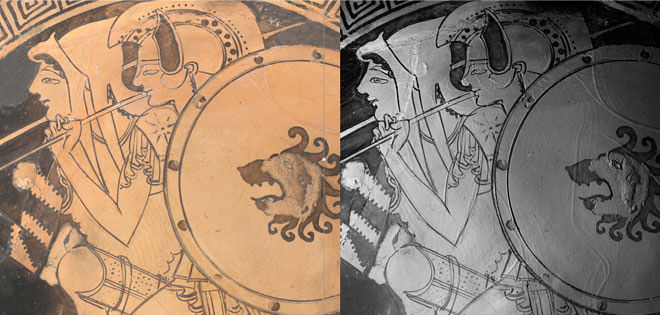
Sanchita Balachandran will deliver The Iris Foundation Awards Lecture on Tuesday, March 31, at 6 pm. Her talk is entitled “Marked in Clay: Interdisciplinary Methods to Re-imagine Ancient Greek Potters at Work.”
Disembodied hands haunt the study of the ancient black-figure and red-figure Greek ceramics made in ancient Athens between 625 and 325 BCE. Of the extant figure-decorated vessels from this time period, nearly a thousand “hands” of the artisans responsible for their images have been identified by scholars of Greek vase painting, either through painted inscriptions or characteristic painting styles. But what of the bodies attached to those hands? Who were these ancient craftspeople? Despite a scholarly acknowledgement that the potters and painters of Athens comprised a diverse group of Athenian citizens as well as immigrants and migrant workers, women and children, and freedpeople and slaves, there is limited archaeological, epigraphic, or literary evidence for their life experiences. The most enduring trace of the ancient potters’ and painters’ existence remains the ceramics they made. While a primary interest of scholars has been in the painting of images on these ancient objects, this talk argues that other moments in the ceramics production process, specifically the drawing of preparatory images on unfired vessels prior to painting, and the firing of clay vessels into colorful ceramics offer us a more intimate understanding of these makers’ lived experience. Interdisciplinary methods—in this case digital imaging using reflectance transformation imaging as well as experimental archaeological approaches—may allow us to identify specific moments of interaction between the bodies of these ancient artisans and the clay they shaped and indelibly marked.
Sanchita Balachandran is Associate Director of the Johns Hopkins Archaeological Museum and Senior Lecturer in the department of Near Eastern studies at Johns Hopkins University. Trained as an objects conservator specializing in archaeological materials, she uncovers traces of past peoples and cultural practices on objects. For a recent exhibition, Who Am I? Remembering the Dead through Facial Reconstruction (2018), Balachandran collaborated with specialists to reconstruct the faces of two ancient Egyptian women. She teaches courses on the technical study of ancient objects and the history and ethics of museum conservation. Balachandran is a fellow of the American Institute for Conservation and founder and director of Untold Stories, a non-profit organization that represents and preserves a fuller spectrum of human cultural heritage in art conversation.
